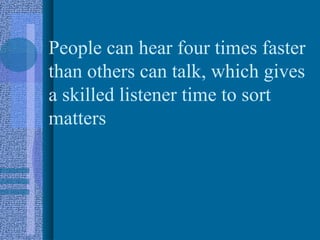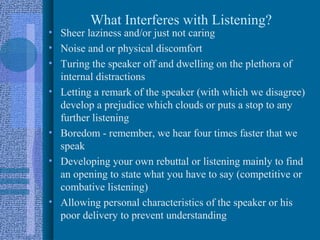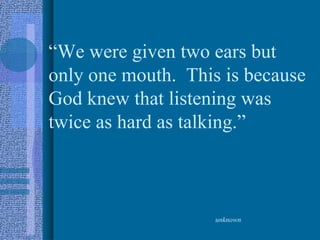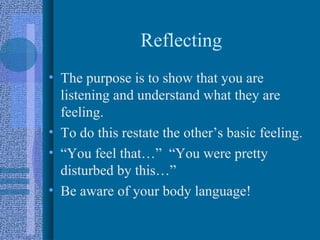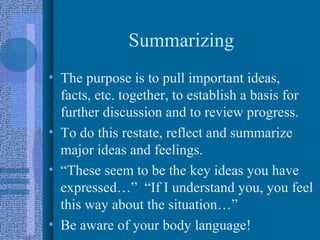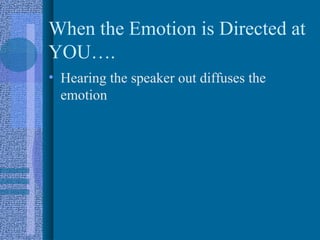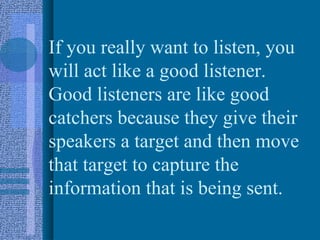Active listening is an important communication skill that involves understanding the speaker's message, feelings, and perspective. It requires focusing on the speaker without judgment, reflecting back their message and feelings, and asking open-ended questions to clarify understanding. Barriers to active listening include distractions, rebutting the speaker instead of listening, and personal biases. Techniques for active listening are encouraging the speaker, restating their key ideas, reflecting their feelings, and summarizing the major themes to facilitate further discussion.



